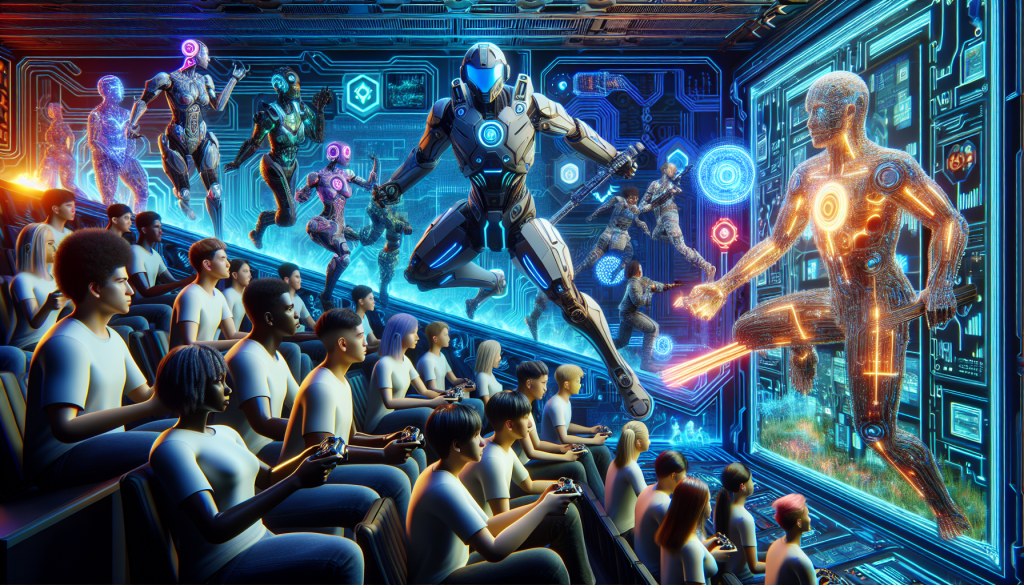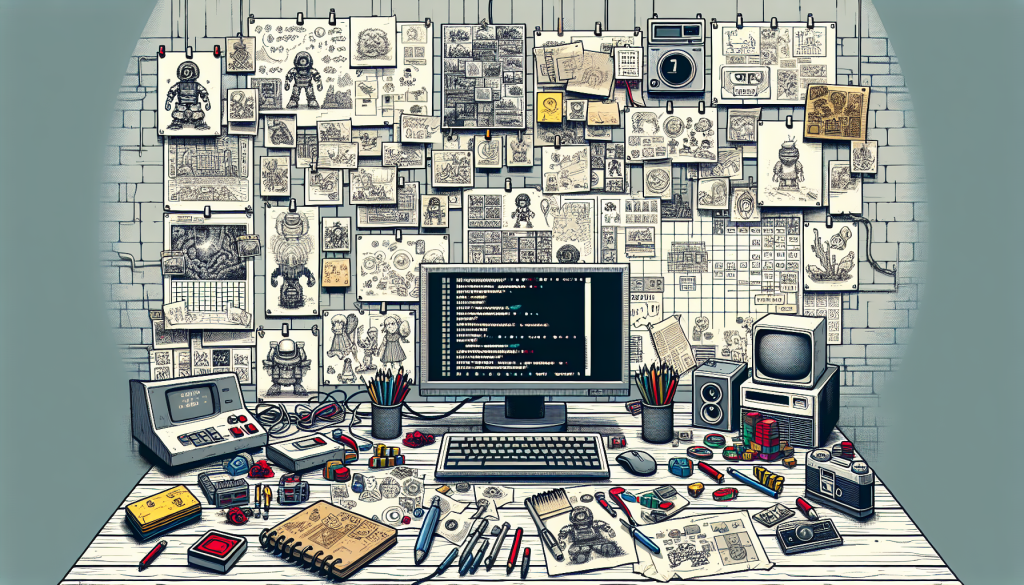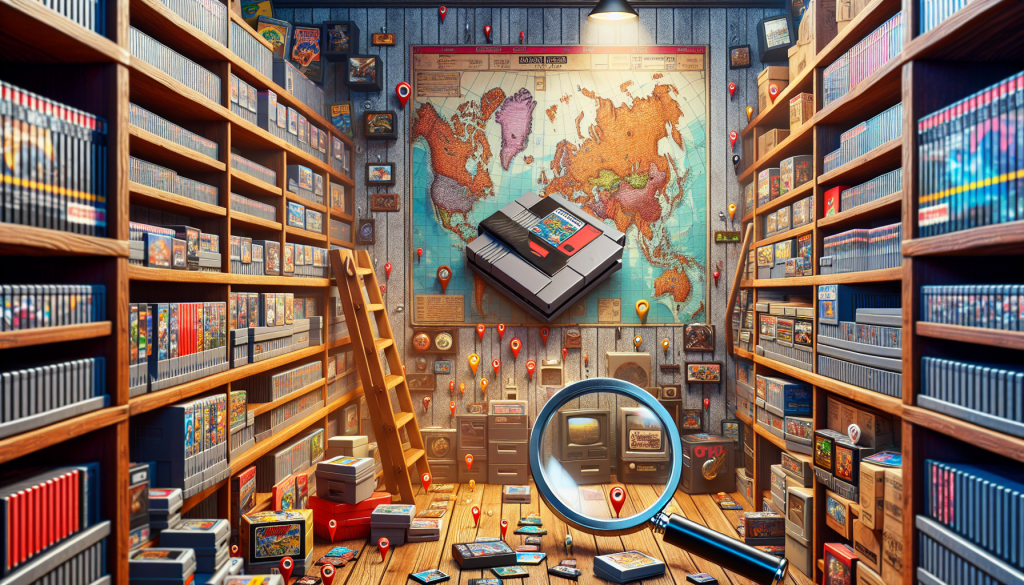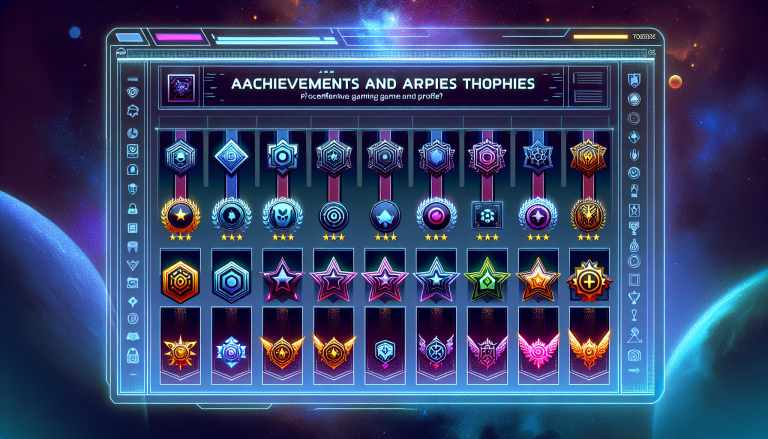Community Dynamics in the 80s vs. 90s Gaming Culture
Remember the good old days when gaming meant gathering around a console with your friends, munching on snacks, and battling it out in a pixelated world? Ah, the 80s and 90s gaming culture was truly something special. Let’s take a trip down memory lane and explore how community dynamics have evolved since then.
In the 80s, gaming was a social event. Whether you were playing Super Mario Bros. on the Nintendo Entertainment System or Street Fighter II in the local arcade, gaming brought people together. Friends would gather in living rooms, huddled around a TV screen, taking turns to beat levels, defeat bosses, and set high scores. The sense of camaraderie was palpable, with shouts of excitement and groans of defeat filling the air.
But as the 90s rolled in, technology began to shape the gaming landscape in new and exciting ways. The rise of personal computers and the internet opened up a whole new world of possibilities. Suddenly, gamers could connect with others from around the globe, transcending physical boundaries and forming virtual communities.
Online gaming platforms like the iconic Battle.net and the revolutionary Sega Dreamcast brought multiplayer experiences into the comfort of our homes. Gamers could now challenge opponents from across the world, forming alliances, engaging in friendly banter, and testing their skills against the very best. It was a gaming revolution.
These online communities fostered a sense of belonging and camaraderie. Gamers could chat, strategize, and share their experiences with like-minded individuals, even if they were thousands of miles away. The bond between gamers transcended age, gender, and nationality, united by their shared love for gaming.
Fast forward to today, and the gaming world has continued to evolve at an astonishing pace. The advent of social media platforms, streaming services, and esports has propelled gaming into the mainstream. It’s no longer just a hobby; it’s a global phenomenon that has captured the hearts and minds of millions.
Communities have become larger and more diverse than ever before. Gaming conventions, such as E3 and Gamescom, bring fans, developers, and industry professionals together in a celebration of all things gaming. Online streaming platforms like Twitch have transformed gaming into a spectator sport, allowing millions to watch their favorite gamers in action, chat with fellow viewers, and even donate to support their favorite content creators.
With the rise of online multiplayer games, communication and teamwork have become essential. Whether it’s coordinating strategies in a competitive shooter or collaborating to complete a dungeon raid in a massive multiplayer online role-playing game (MMORPG), gamers now rely on effective communication to succeed. Platforms such as Discord have emerged as popular hubs for gamers to connect, chat, and coordinate their gaming sessions.
So, as we look back at the community dynamics of the 80s and 90s gaming culture, one thing remains clear: gaming has always been about bringing people together. Whether it’s through couch co-op, online multiplayer, or virtual communities, gaming has always had the power to forge connections, foster friendships, and create memories that last a lifetime.
Technological Advancements: From Pixels to Virtual Reality
Welcome to the exciting world of gaming! Whether you’re a dedicated gamer or simply curious about the evolution of this beloved pastime, you’re in for a treat. Today, we’re going to dive into the incredible technological advancements that have shaped the gaming industry over the years. From humble pixels to mind-blowing virtual reality experiences, the progress has been nothing short of extraordinary.
In the early days of gaming, back in the 80s and 90s, the graphics were, well, let’s just say…charmingly simple. Games were dominated by pixelated images and limited color palettes. But don’t let that fool you – they were still loads of fun! Think about classics like Pac-Man, Super Mario Bros, or Tetris. These games captured the hearts of millions, despite their basic visuals. They proved that gameplay and enjoyment were the true pillars of gaming culture.
Fast forward to the present day, and you’ll find yourself immersed in a whole new world of gaming. Thanks to technological advancements, we now have incredibly realistic graphics that make games look like interactive movies. The transition from pixels to high-definition visuals has been nothing short of mind-blowing. Just take a look at games like Red Dead Redemption 2 or The Last of Us Part II – the level of detail and lifelike animations are truly awe-inspiring.
But it’s not just the visuals that have undergone a revolution. The way we experience games has also taken a giant leap forward with the advent of virtual reality (VR). VR technology allows players to step into a virtual world and become fully immersed in the game environment. Whether you’re exploring a haunted mansion, battling aliens on a distant planet, or simply shooting hoops in your living room, VR adds a whole new layer of excitement and immersion to gaming.
Now, you might be wondering, how can you make the most of these technological advancements? Well, fear not! We’ve got some authoritative advice to help you navigate the ever-expanding gaming landscape.
- Stay up to date: With technology advancing at such a rapid pace, it’s important to stay informed about the latest gaming hardware and software. Follow gaming news websites, forums, and social media accounts to keep up with the latest trends and releases.
- Try before you buy: With the rise of digital distribution platforms and online marketplaces, it’s easier than ever to try out games before making a purchase. Many platforms offer free demos or trial versions, allowing you to get a feel for the game and see if it’s your cup of tea.
- Join the gaming community: Gaming is more than just a solo experience – it’s a vibrant and diverse community. Whether you prefer online multiplayer games or local co-op adventures, connecting with fellow gamers can enhance your gaming experience and open up a world of new friendships.
- Embrace new technologies: Don’t be afraid to embrace new technologies like virtual reality. VR gaming provides a level of immersion that is simply unparalleled. So, if you have the opportunity to experience VR, grab it with both hands and prepare to be amazed.
The gaming industry has come a long way since the 80s and 90s. Technological advancements have transformed gaming into a multi-billion dollar industry and a beloved form of entertainment for people of all ages. So, whether you’re a seasoned gamer or just starting your gaming journey, strap on your virtual reality headset, pick up your controller, and get ready for an unforgettable adventure!
The Evolution of Game Design: From Linear Gameplay to Open Worlds
Gaming has come a long way since the 80s and 90s. Back then, game design was simple and straightforward, with linear gameplay being the norm. You would start at point A, go through a series of levels, and eventually reach point B. It was a blast for sure, but the boundaries were clear and the experience somewhat limited. However, as technology advanced and gaming became more immersive, game designers started exploring new frontiers. This led to the rise of open-world games, where players are given the freedom to explore vast virtual landscapes and make choices that impact the game’s outcome. It’s like stepping into a whole new world and becoming the hero of your own story. One of the key factors that contributed to the evolution of game design is the improvement in graphics and processing power. In the 80s and 90s, games were pixelated and had limited visual capabilities. But with the advent of more powerful consoles and PCs, developers were able to create stunningly realistic worlds that felt alive. With greater processing power also came the ability to create complex artificial intelligence systems. Non-player characters (NPCs) in open-world games could now have their own routines and behaviors, making the virtual world feel more alive and dynamic. You could stumble upon NPCs having conversations, going about their daily lives, or even engaging in side quests that you could choose to join. Another significant aspect of open-world game design is the emphasis on player choice. In linear games, the story was predetermined, and players had little influence over the outcome. But in open-world games, players have the power to shape the narrative through their decisions and actions. Whether it’s choosing to assist or betray a faction, taking on side quests, or exploring hidden areas, the game adapts to the player’s choices, creating a unique and personalized experience. Furthermore, the exploration aspect of open-world games is a major draw for many players. In linear games, you were confined to a specific path, but in open-world games, the world is your oyster. You can roam through dense forests, climb towering mountains, dive into deep oceans, and discover hidden treasures. This sense of freedom and discovery adds a whole new layer of immersion and enjoyment to the gaming experience. However, with great power comes great responsibility. Open-world games can sometimes overwhelm players with the sheer amount of content and choices available. It’s easy to get lost in the vastness of the virtual world or fall into a never-ending cycle of side quests. That’s why it’s important to find a balance between exploration and progression. Take breaks, set goals, and prioritize main story quests to ensure a fulfilling gaming experience. In conclusion, the evolution of game design from linear gameplay to open worlds has revolutionized the gaming industry. With improved graphics, advanced AI systems, and a focus on player choice, open-world games offer a more immersive and personalized experience. They allow players to explore vast virtual landscapes, shape the narrative, and embark on epic adventures. So, grab your controller or put on your VR headset and get ready to dive into a world where the possibilities are endless.The Impact of Gaming Culture on Society Today
Gaming culture has come a long way since its humble beginnings in the 80s and 90s. What was once considered a niche hobby has now become a global phenomenon that has a significant impact on society. From influencing entertainment to shaping social interactions, gaming has become an integral part of our modern world.
One of the most noticeable effects of gaming culture on society today is its influence on entertainment. Video games have evolved from simple pixelated graphics to immersive virtual reality experiences. The technological advancements in gaming have allowed developers to create visually stunning and realistic worlds that captivate players. Whether it’s exploring ancient ruins in “Uncharted” or battling dragons in “The Elder Scrolls,” gaming has become a form of escapism that offers incredible storytelling and breathtaking visuals.
But gaming culture is not just limited to entertainment. It has also had a significant impact on social interactions. In the past, gaming was often seen as a solitary activity, with players spending hours alone in front of their screens. However, with the rise of multiplayer online games and the advent of esports, gaming has become a social experience. Players can now connect with others from around the world, forming communities and friendships through their shared love of gaming.
Furthermore, gaming has also become a platform for self-expression and creativity. With the rise of game design tools and platforms like Roblox and Minecraft, players can create their own virtual worlds and share them with others. This has not only fostered a sense of community but has also sparked the creativity of millions of gamers. From building intricate structures to designing elaborate game levels, gaming has become a canvas for players to express themselves.
Another significant impact of gaming culture is its influence on education. Studies have shown that gaming can improve problem-solving skills, critical thinking, and hand-eye coordination. Educational games like “Math Blaster” and “Oregon Trail” have been used in classrooms to engage students and make learning more enjoyable. Additionally, gamified learning platforms have emerged, incorporating gaming elements into traditional educational methods to motivate and engage students.
However, while gaming has brought about many positive changes, it’s important to recognize the potential negative impacts as well. Excessive gaming can lead to sedentary lifestyles and social isolation if not balanced with other activities. It’s essential for gamers to practice moderation and ensure that gaming doesn’t take precedence over other important aspects of life, such as physical activity and socializing with friends and family.
In conclusion, gaming culture has had a profound impact on society today. From its influence on entertainment and social interactions to its role in fostering creativity and improving education, gaming has become a force to be reckoned with. As gaming continues to evolve, it’s important for individuals to embrace the positive aspects of gaming culture while also being mindful of the potential negative effects. So, grab your controller, join a gaming community, and let the adventures begin!












